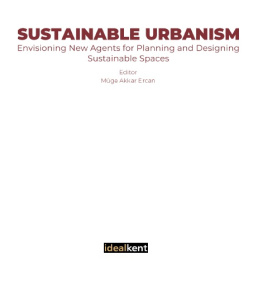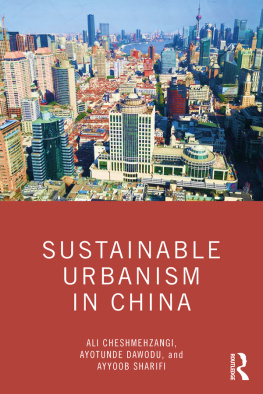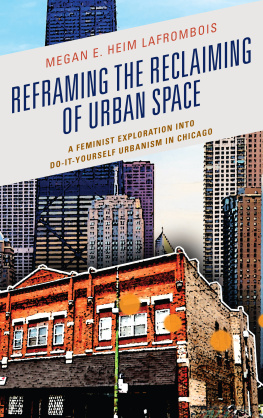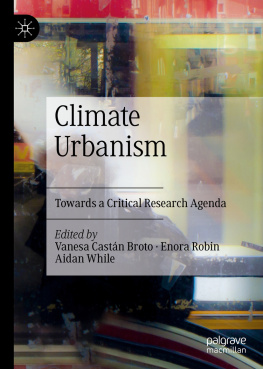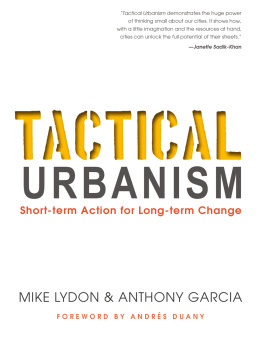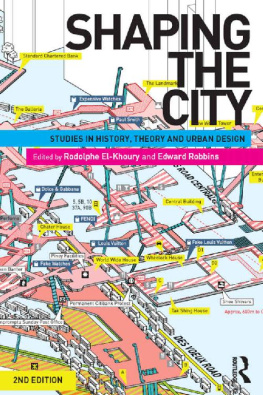Congress for the New Urbanism - Charter of the New Urbanism
Here you can read online Congress for the New Urbanism - Charter of the New Urbanism full text of the book (entire story) in english for free. Download pdf and epub, get meaning, cover and reviews about this ebook. year: 2013, publisher: McGraw-Hill Education, genre: Politics. Description of the work, (preface) as well as reviews are available. Best literature library LitArk.com created for fans of good reading and offers a wide selection of genres:
Romance novel
Science fiction
Adventure
Detective
Science
History
Home and family
Prose
Art
Politics
Computer
Non-fiction
Religion
Business
Children
Humor
Choose a favorite category and find really read worthwhile books. Enjoy immersion in the world of imagination, feel the emotions of the characters or learn something new for yourself, make an fascinating discovery.

- Book:Charter of the New Urbanism
- Author:
- Publisher:McGraw-Hill Education
- Genre:
- Year:2013
- Rating:5 / 5
- Favourites:Add to favourites
- Your mark:
Charter of the New Urbanism: summary, description and annotation
We offer to read an annotation, description, summary or preface (depends on what the author of the book "Charter of the New Urbanism" wrote himself). If you haven't found the necessary information about the book — write in the comments, we will try to find it.
THE DEFINITIVE GUIDE TO THE PRINCIPLES OF NEW URBANISMFULLY REVISED
The Congress for the New Urbanism (CNU) is the leading organization promoting walkable, mixed-use neighborhood development, sustainable communities, and healthier living conditions. Thoroughly updated to cover the latest environmental, economic, and social implications of urban design, Charter of the New Urbanism, Second Edition features insightful writing from 62 authors on each of the Charters principles. Real-world case studies, plans, and examples are included throughout.
This pioneering guide explains how to restore urban centers, reconfigure sprawling suburbs, conserve environmental assets, and preserve our built legacy. It examines communities at three separate but interdependent levels:
- The region: Metropolis, city, and town
- Neighborhood, district, and corridor
- Block, street, and building
Featuring new photos and illustrations, this practical, up-to-date resource is invaluable for design professionals, developers, planners, elected officials, and citizen activists.
New coverage includes:
- Urban-to-Rural Transect
- Form-based codes
- Light Imprint community design
- Retrofitting suburbia
- Tactical Urbanism
- Canons of Sustainable Architecture and Urbanism
- And much more
Essays by:
Randall Arendt
G. B. Arrington
Jonathan Barnett
Stephanie Bothwell
Peter Calthorpe
Thomas J. Comitta
Victor Dover
Andrs Duany
Douglas Farr
Geoffrey Ferrell
Ray Gindroz
Ken Greenberg
Jacky Grimshaw
Douglas Kelbaugh
Lon Krier
Walter Kulash
Bill Lennertz
William Lieberman
Wendy Morris
Elizabeth Moule
John O. Norquist
Myron Orfield
Elizabeth Plater-Zyberk
Stefanos Polyzoides
Shelley R. Poticha
Mark M. Schimmenti
Daniel Solomon
Laurie Volk
Robert D. Yaro
Todd Zimmerman
Commentaries by:
Laurence Aurbach
Kaid Benfield
Phillip Bess
Howard Blackson
Hazel Borys
Patrick Condon
Ann Daigle
Ellen Dunham-Jones
Ethan Goffman
Richard Allen Hall
Tony Hiss
Jennifer Hurley
James Howard Kunstler
Gianni Longo
Tom Low
Michael Lydon
John Massengale
Michael Mehaffy
Anne Vernez Moudon
Steven Mouzon
Paul Murrain
Nathan Norris
Russell Preston
Henry R. Richmond
Daniel Slone
Sandy Sorlien
Robert Steuteville
Galina Tachieva
Emily Talen
Dhiru Thadani
Marc A. Weiss
June Williamson
Congress for the New Urbanism: author's other books
Who wrote Charter of the New Urbanism? Find out the surname, the name of the author of the book and a list of all author's works by series.

